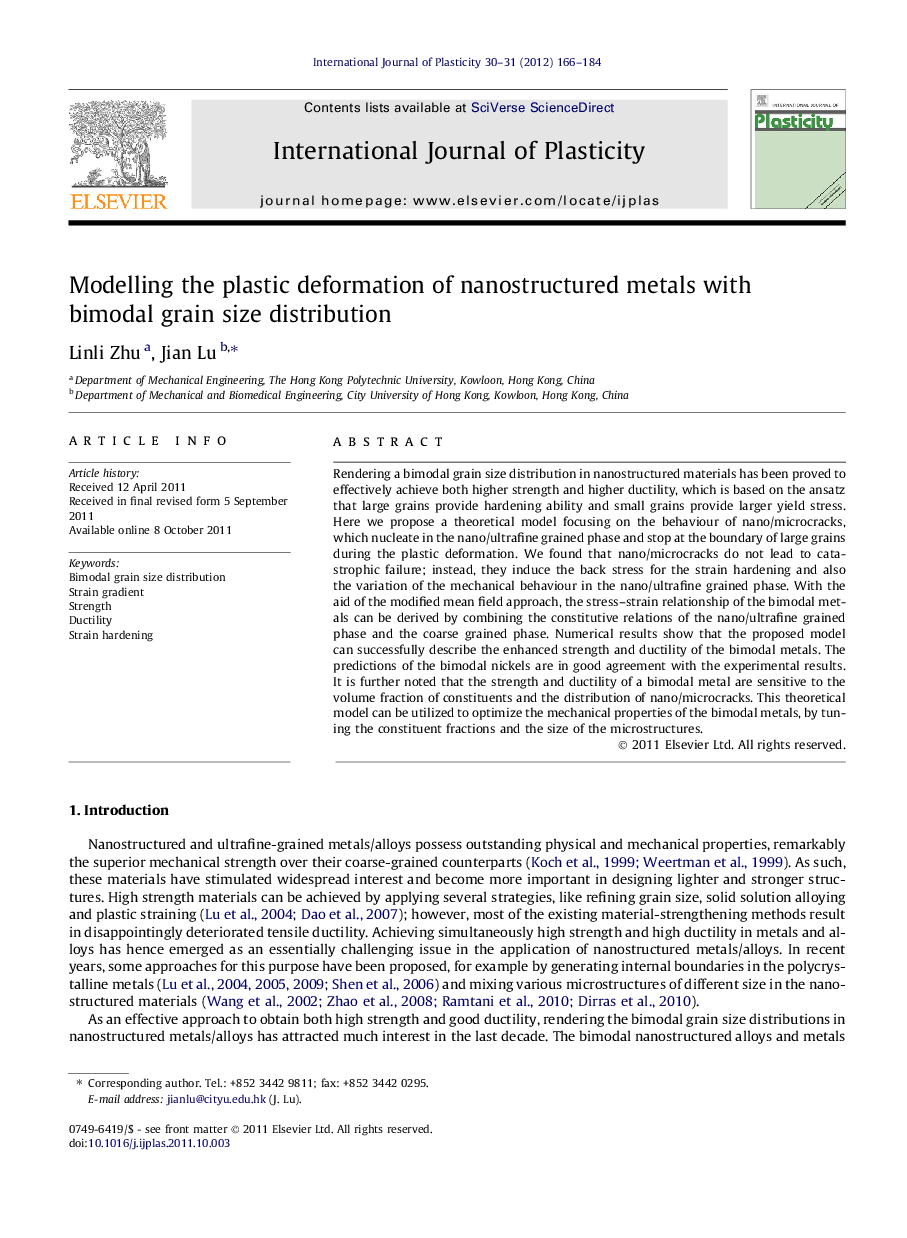| Article ID | Journal | Published Year | Pages | File Type |
|---|---|---|---|---|
| 784444 | International Journal of Plasticity | 2012 | 19 Pages |
Rendering a bimodal grain size distribution in nanostructured materials has been proved to effectively achieve both higher strength and higher ductility, which is based on the ansatz that large grains provide hardening ability and small grains provide larger yield stress. Here we propose a theoretical model focusing on the behaviour of nano/microcracks, which nucleate in the nano/ultrafine grained phase and stop at the boundary of large grains during the plastic deformation. We found that nano/microcracks do not lead to catastrophic failure; instead, they induce the back stress for the strain hardening and also the variation of the mechanical behaviour in the nano/ultrafine grained phase. With the aid of the modified mean field approach, the stress–strain relationship of the bimodal metals can be derived by combining the constitutive relations of the nano/ultrafine grained phase and the coarse grained phase. Numerical results show that the proposed model can successfully describe the enhanced strength and ductility of the bimodal metals. The predictions of the bimodal nickels are in good agreement with the experimental results. It is further noted that the strength and ductility of a bimodal metal are sensitive to the volume fraction of constituents and the distribution of nano/microcracks. This theoretical model can be utilized to optimize the mechanical properties of the bimodal metals, by tuning the constituent fractions and the size of the microstructures.
► A micromechanics-based model is developed to describe the strength and ductility of the bimodal metals ► The contribution of the nano/microcracks in the nano/ultrafine grained phase is considered on the mechanical behaviours. ► The mechanical performance depends on the constituent fractions and distribution of nano/microcracks. ► This study can optimize mechanical properties by tuning the grain size and corresponding fractions.
